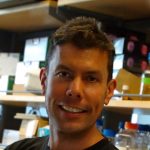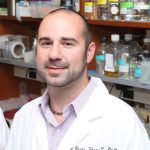
Funded by the 2016 Vitale Gala in memory of Julia Mounts.
Rhabdomyosarcoma (RMS) is the most common soft tissue cancer in children. Treatment and survival for children with RMS has not changed for thirty years. Aggressive treatments result in deformities and other health issues in survivors. This highlights a need for more understanding of RMS. Identifying the key features of RMS would guide the search of new treatments. The Pediatric Cancer Genome Project (PCGP) at St. Jude Children’s Research Hospital identified many genetic changes in RMS. The most common subtype of RMS is embryonal rhabdomyosarcoma (ERMS). ERMS had many different genetic changes.
It remains unclear which identified genetic changes drive ERMS formation. Identifying the drivers will expose new targets for treatment. Our lab proposes to identify the essential drivers of ERMS. We will utilize a cell-based approach to explore the genetic changes identified by the PCGP. This system allows us to quickly test the effect of each of the potential driving changes.
We will develop new model systems that more closely resemble our patient’s tumors. Next, we will use these simple models to test new treatments. It is our hope that models with the minimal gene changes necessary for ERMS will simplify our search for new treatments. The result will enable us to pinpoint methods to kill tumor cells. The long-term goal is to couple the specific genetic changes to new therapies.

Funded by the Stuart Scott Memorial Cancer Research Fund
Cancer rates are falling in North America, with a few important exceptions. Liver and endometrial cancers in African Americans and Hispanics continue to rise. We try to decrease that disparity by identifying new characteristics of those cancers. Those characteristics allow doctors to determine if a patient will respond to new therapies. The characteristics also provide an incentive for drug companies to pursue new therapies, since the clinical trials are more likely to succeed.
But how do we find these characteristics? Why have they not already been discovered? The answer is that our lab made a new discovery about how these cancers grow. We found that a protein controls organ growth by placing a “molecular barcode” on the DNA. Under healthy conditions, this barcode is only present when an organ is supposed to grow. But in cancer the barcode is always present, commanding it to grow into a tumor.
The work we will do here tests if we can examine mouse liver tumors for these barcodes. The barcodes will allow us to develop new therapies for liver cancer patients. Those new therapies should stop tumor growth. The barcodes also provide a way for doctors to know which drugs will work for a particular patient. By personalizing medicine, we hope to make new and better therapies that are not worse than the disease.

New drugs that use the body’s own immune system to treat cancer have been one of the most exciting recent developments in cancer research. Studying the cancer cells in a tumor tells doctors a lot about how to treat that kind of cancer, no matter whether it appears in the breast, the brain or somewhere else in the body. Most types of cancer that respond to these new drugs have something in common: they tend to have high numbers of gene mutations, or DNA changes.
Mutations sometimes cause changes that make the tumor cell look like it has been infected by a virus or bacteria. This makes the immune system attack the tumor, just as it would attack a cold or an infected cut on the finger.
Most mutations have no impact on how aggressive a patient’s cancer is, so having more mutations is not a bad thing. In fact, patients whose tumors have more mutations often have better outcomes, probably because they trigger the immune system to start attacking the cancer.
Unfortunately, many other cancer types have fewer mutations, and so may not respond as well to new drugs that stimulate the immune system. We suspect that a specific group of drugs may make some of these tumors respond better.
In this study, we will try to find out if this is true. If so, it may be possible to begin testing the drugs on patients right away to help patients whose cancer does not respond to standard treatments.







